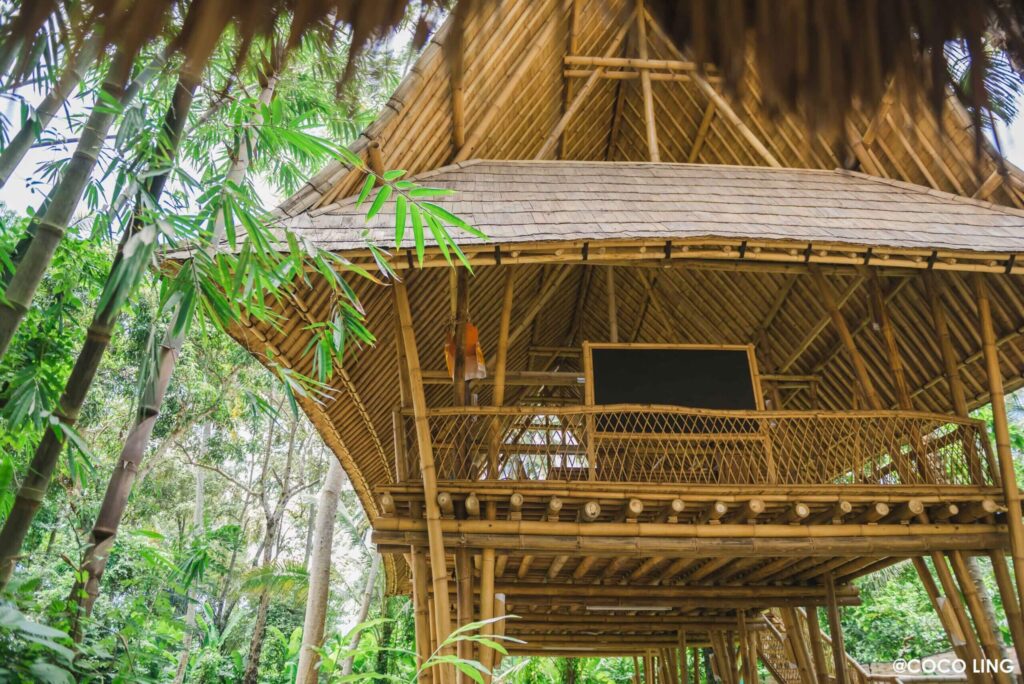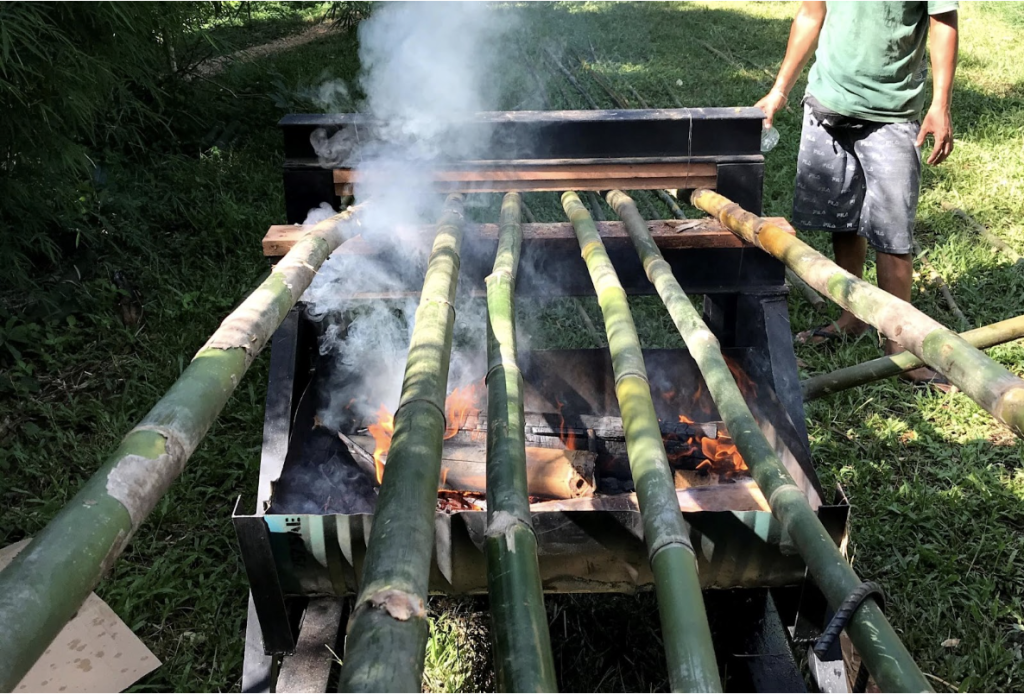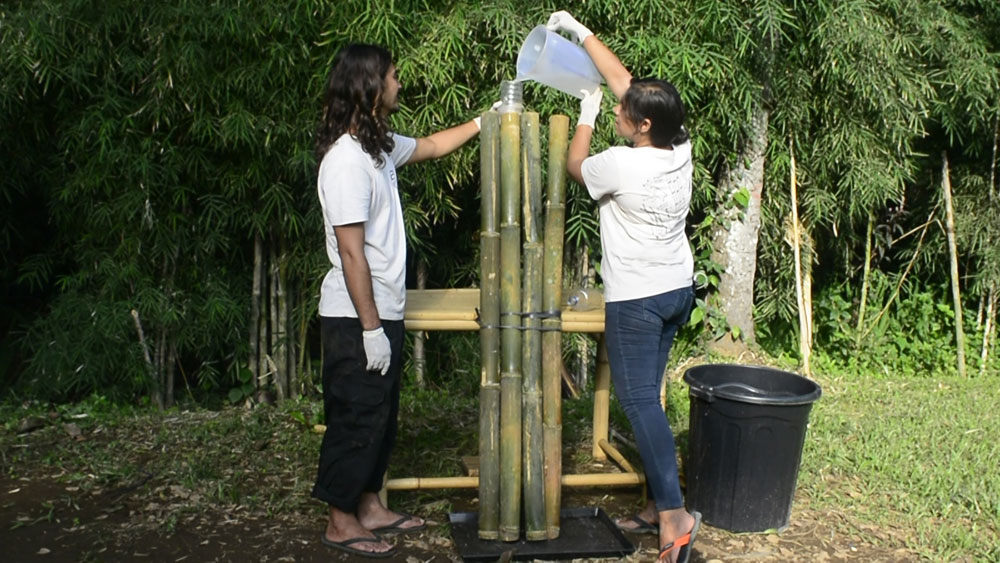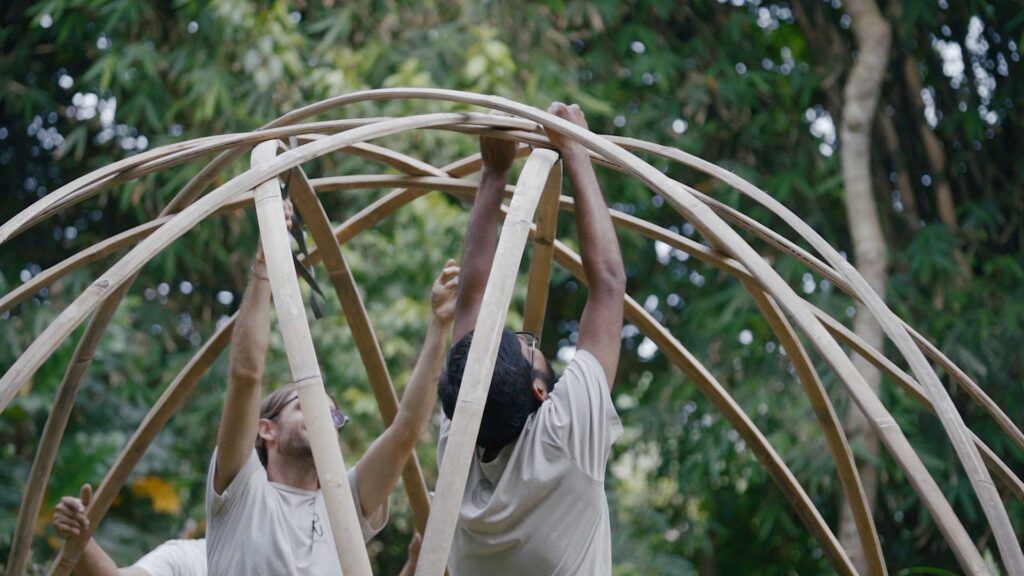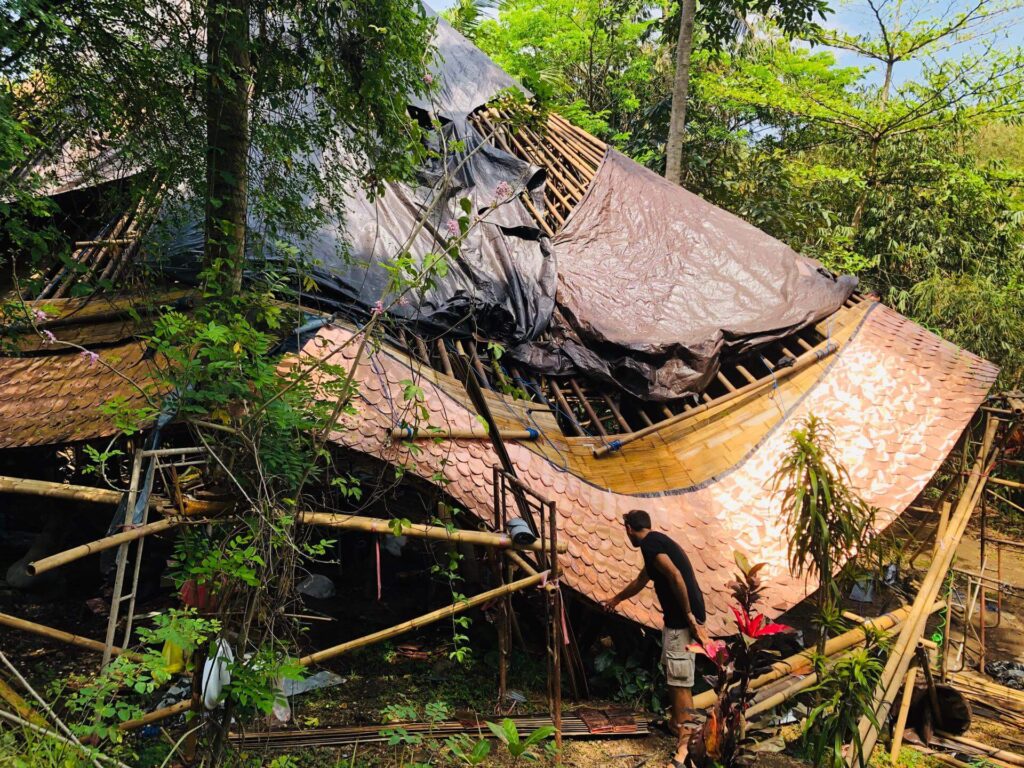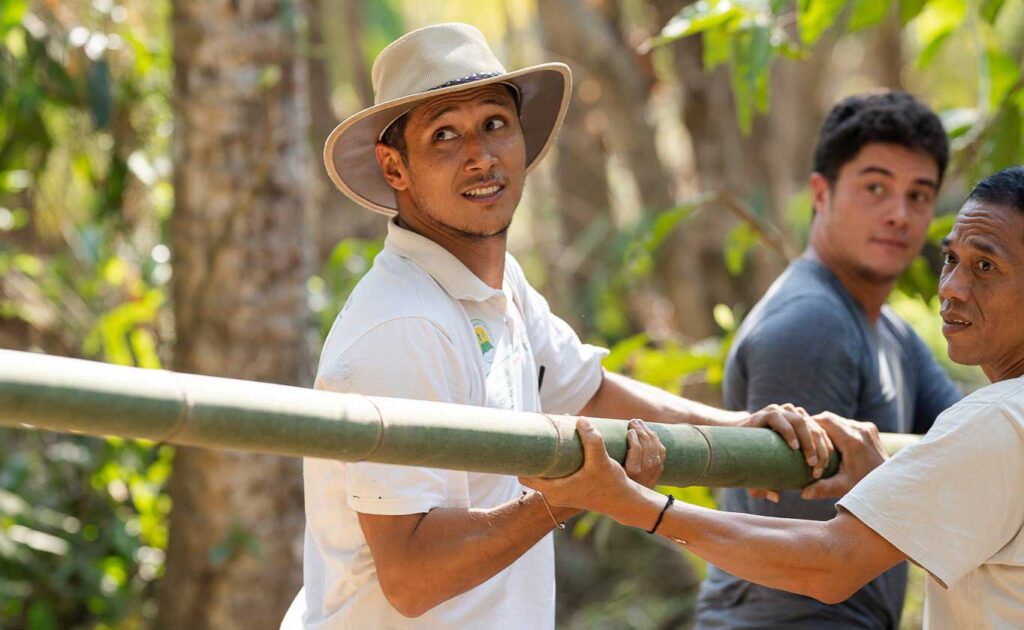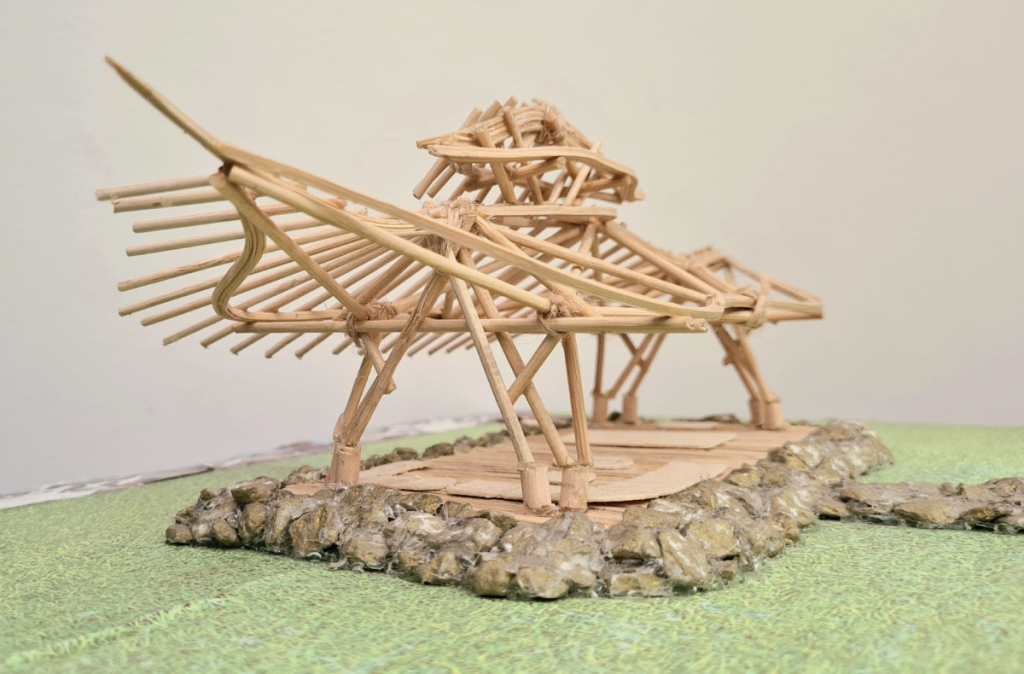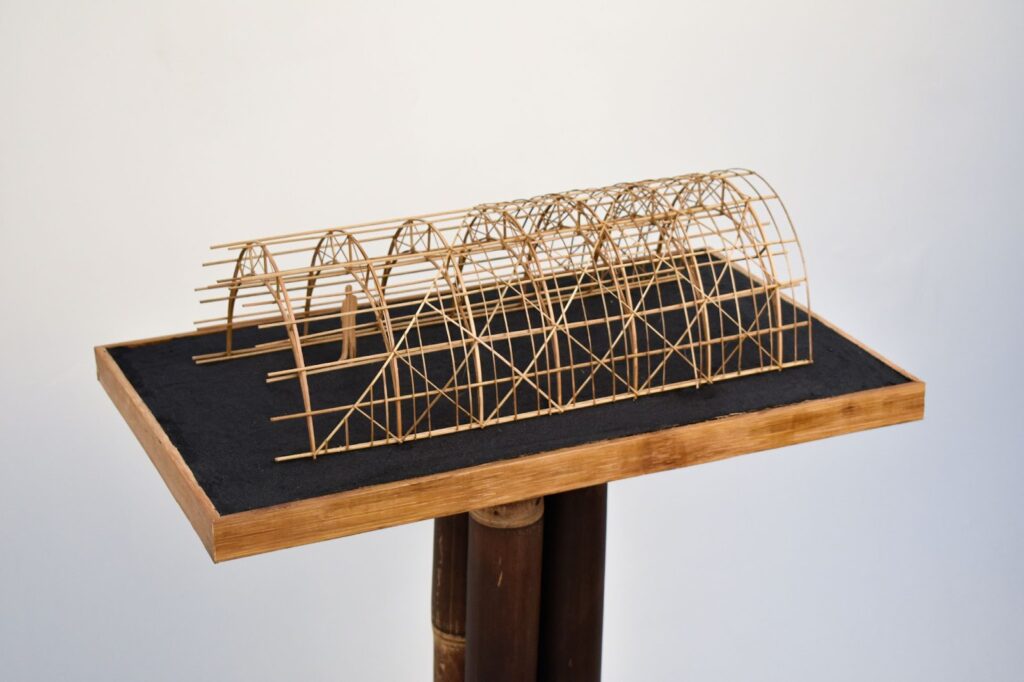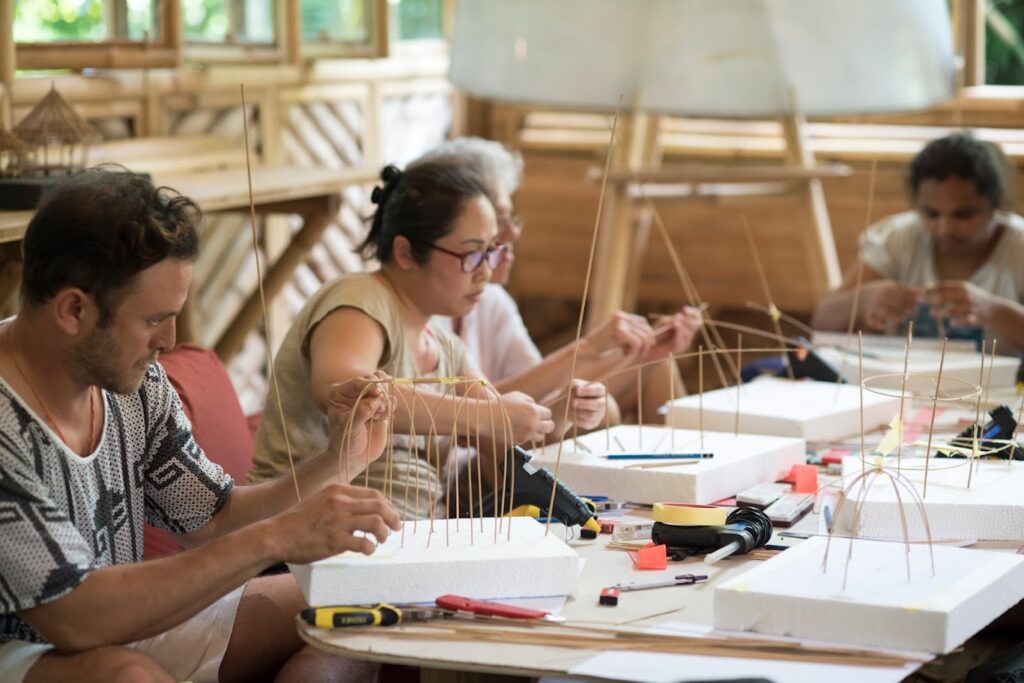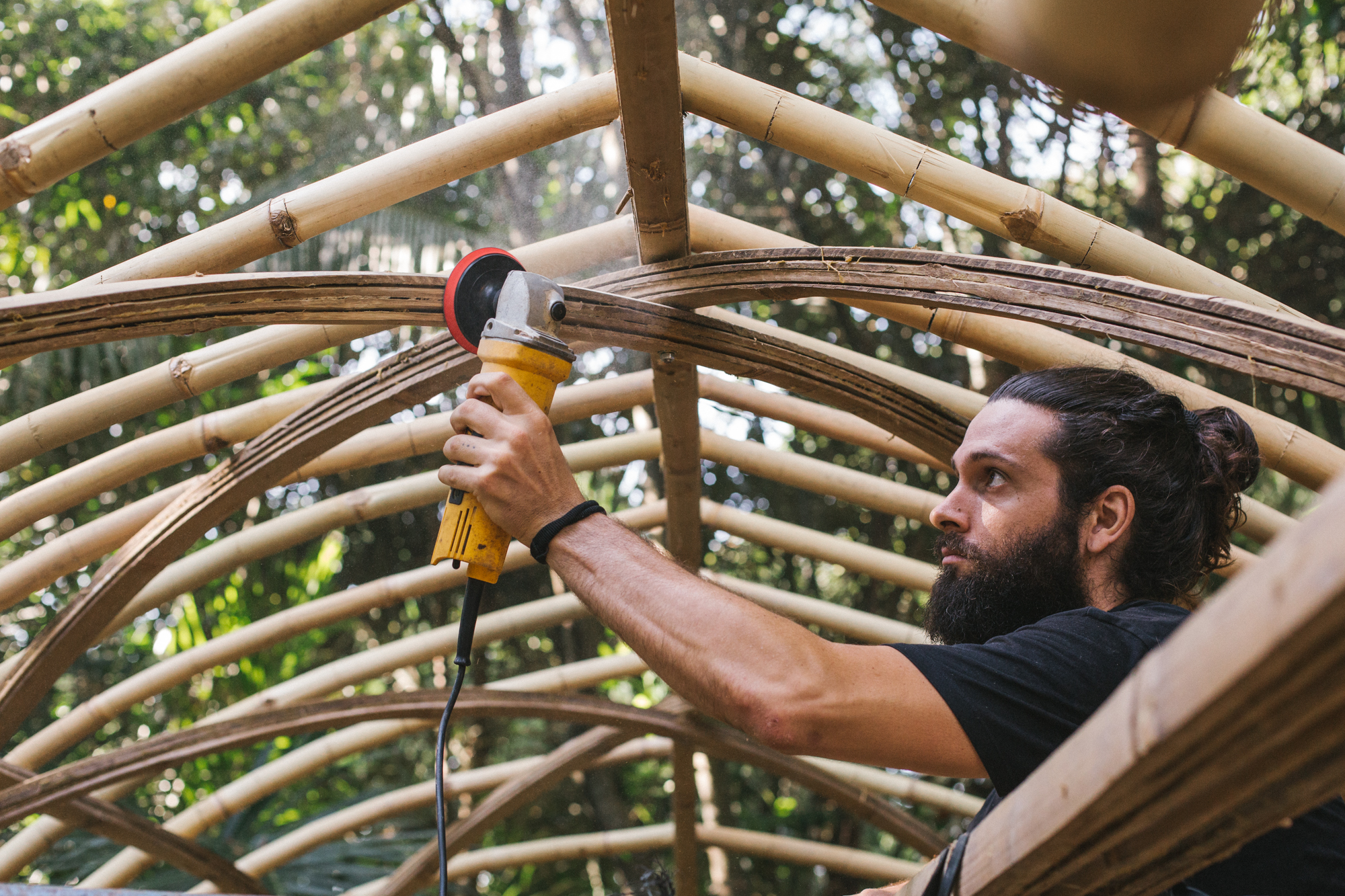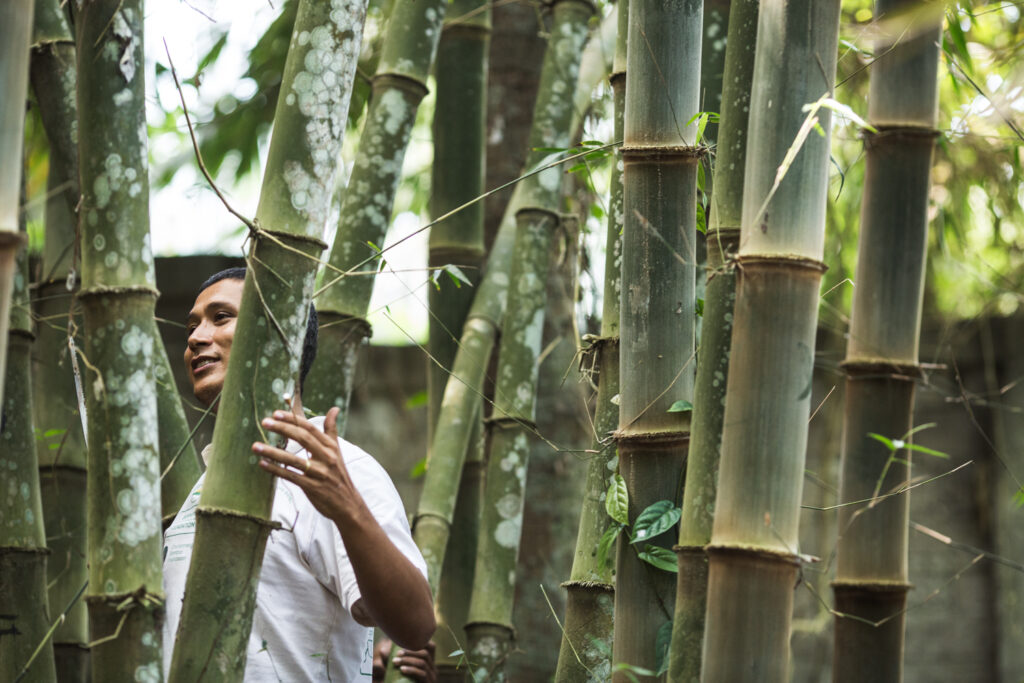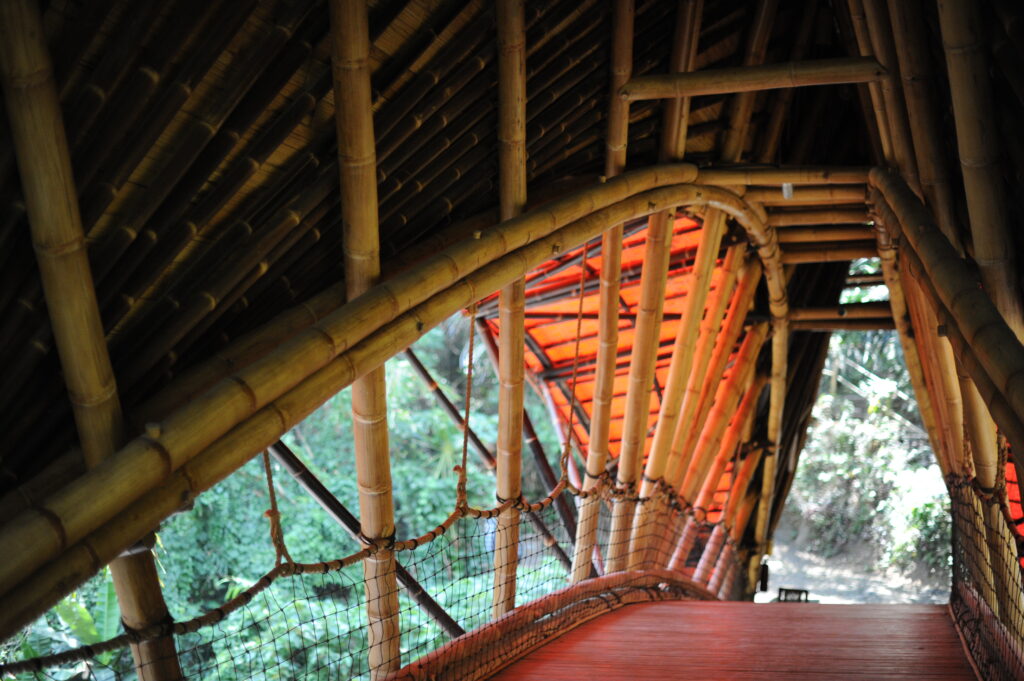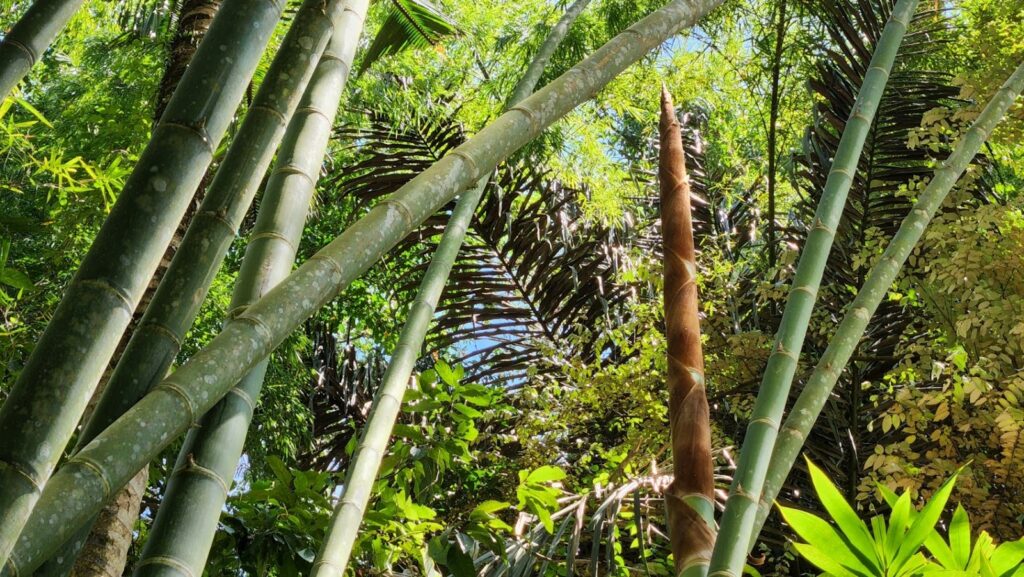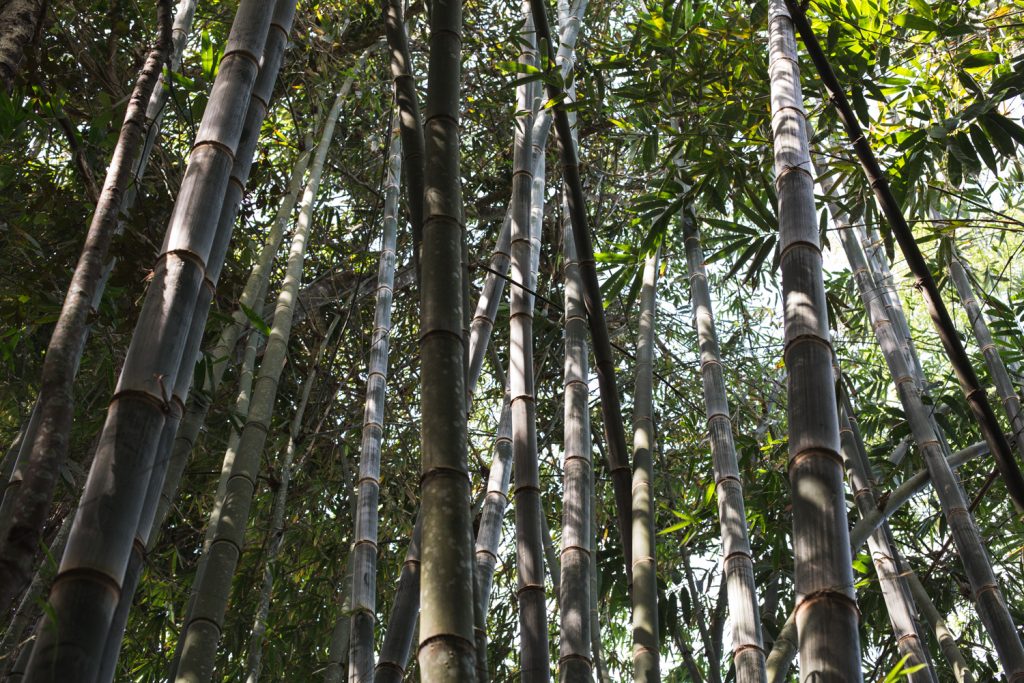Bamboo Fabric: Is it actually sustainable?
By | March 12, 2025 | Exploring Bamboo -
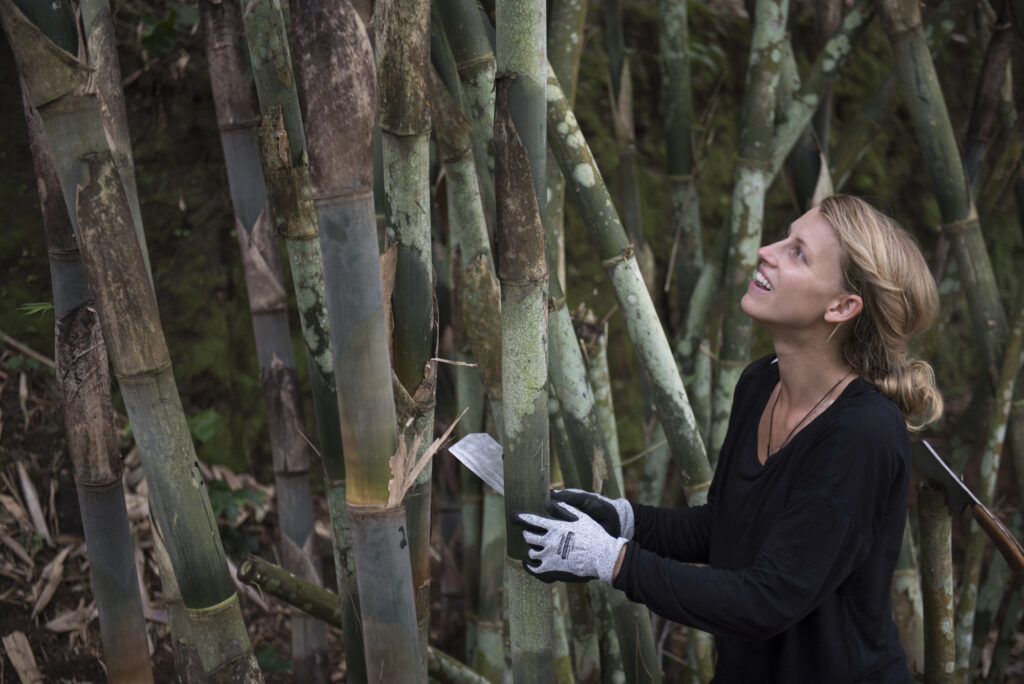
Bamboo fabric is often marketed as an eco-friendly alternative to conventional fabrics, but just how sustainable are bamboo textiles really?
The answer isn’t as simple as you might think. While bamboo as a raw material itself is undoubtably a sustainable resource, bamboo fabric is a different story.
Known for its fast growth and minimal environmental impact, the bamboo plant stands out as a sustainable natural resource. Unlike cotton, which uses large amounts of water and pesticides, bamboo grows with very little intervention. It does not need chemical fertilizers and requires minimal irrigation. As one of the fastest-growing plants in the world, bamboo poles can reach maturity in four years. On the other hand, hardwood trees require decades before they are able to be harvested for fiber production for fabrics such as Rayon, Lyocell, and Model.
Bamboo’s ability to regenerate and not need to be replanted helps prevent soil erosion, since its root system is highly effective at retaining water in the soil. Additionally, its capacity to absorb carbon dioxide at a higher rate than many species of trees only further enhances its appeal as an eco-friendly resource. These characteristics have made bamboo a popular choice in the textile industry, as demand for more sustainable materials continues to grow.
India, China, and Brazil dominate global bamboo fiber production, with up to 40,000 tons of bamboo fiber being produced globally for textiles each year. Most of these fibers are made using the bamboo species Moso, or Phyllostachys edulis, a tall, running species of bamboo native to China and Taiwan.
In addition to the sustainability of its raw material, bamboo fabric has benefits to the wearer. It is great for UV protection and has moisture-wicking properties, meaning that the fabric naturally draws moisture away from the skin, keeping the wearer dry and comfortable. These characteristics have made bamboo fabric a popular choice for many textile items, including clothing items such as t-shirts, underwear, and socks, as well as homeware such as sheets and towels.
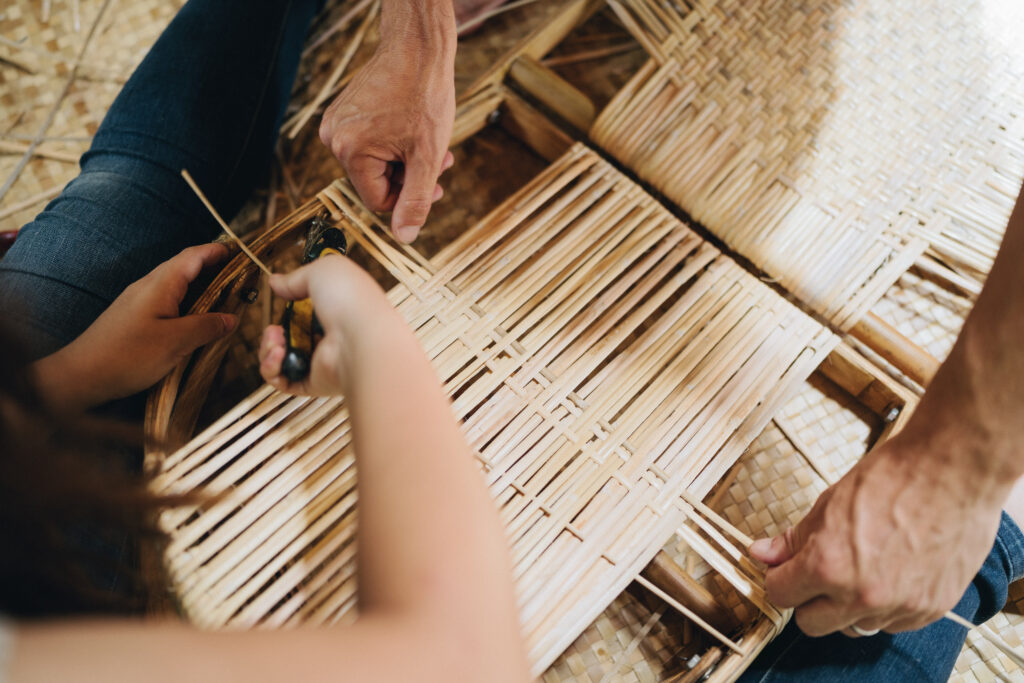
Related: Why Is Bamboo so Important for Sustainability?
There are two main ways that bamboo fibers are processed into fabric: chemically and mechanically; each of which has a different impact on the environment. We will explore three types of bamboo fabrics below and how sustainable they are to produce.
Bamboo Rayon
Chemical processing makes up the vast majority of bamboo fabric on the market and creates what is known as bamboo rayon or bamboo viscose. This process involves breaking down the bamboo pulp using sodium hydroxide, which acts to remove unwanted plant material. After this, carbon disulfide is added to react with the cellulose, transforming it into a gel-like substance. It is then further dissolved, left to ripen, and filtered. Then, it is forced through spinneret nozzles, transforming it into bamboo viscose filaments.
While chemical processing creates a smooth, silky fabric, the entire process uses large amounts of water. Additionally, the chemicals used are a potential threat to those working with them. The sodium hydroxide is dangerous for skin tissues, while the carbon disulfide can cause health issues when inhaled. These substances can also cause air and wastewater pollution.
Bamboo Lyocell
Bamboo lyocell is another chemical processing method used to transform bamboo fibers into fabric. However, compared to rayon, this method is considerably less toxic and operates within a closed-loop system. This process uses chemicals such as N-methylmorpholine-N-oxide and a water methanol solution, both of which can be used repeatedly, unlike the chemicals used in bamboo rayon production.
By continuously reusing these chemicals, the closed-loop system acts to minimizes chemical waste and significantly reduces environmental harm, making bamboo lyocell a more sustainable option than bamboo rayon. However, the majority of bamboo fabric is not produced in this way. Bamboo lyocell is only manufactured in a handful of facilities, requiring technical computer-controlled systems to ensure precision and efficiency. This type of fabric strikes a balance between sustainability and economic viability, making it a more responsible and possible alternative.
Bamboo Linen
The mechanical processing method is the most sustainable way to create bamboo fabric. It is used to produce bamboo linen. This method involves using mechanical forces to pull apart the fibers from the rest of the bamboo culm. After this, natural enzymes are used to further break the fibers down. The extracted fibers are then spun into a yarn, creating a fabric that is not as soft as bamboo rayon or lyocell and tends to crease easily. However, its textured and breathable quality is appreciated by many. Despite it being more sustainable than chemical processing, this method is labor-intensive and costly. Therefore it is rarely used for commercial bamboo fabric production.
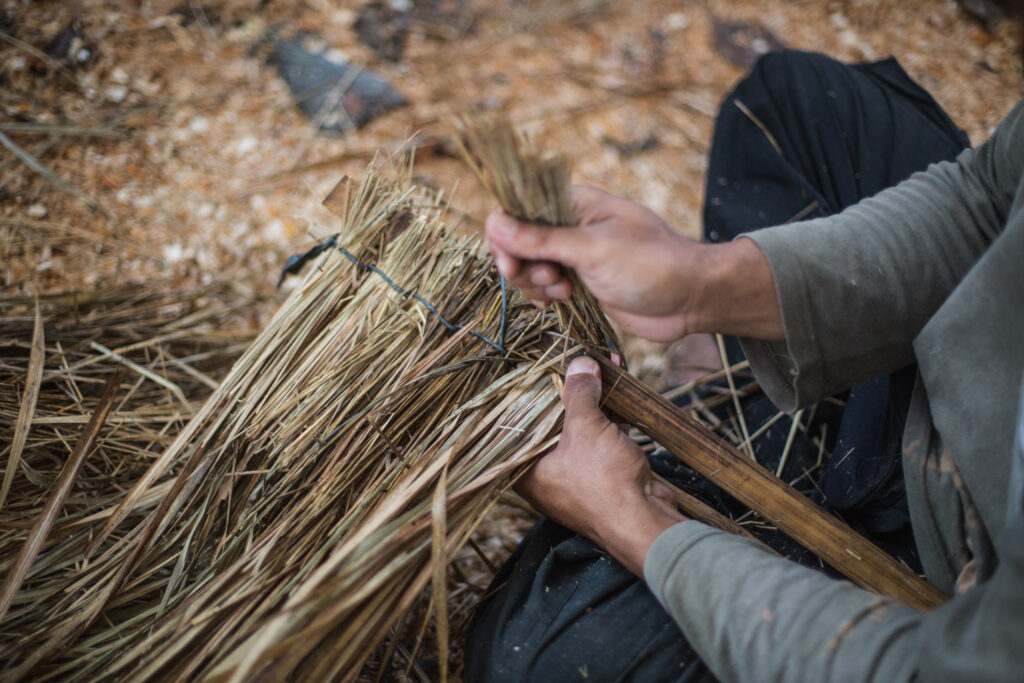
While bamboo as a raw material is considered to be a sustainable resource, the key to making an informed choice about bamboo fabrics lies in understanding how each one is processed.
If you’re looking for the most sustainable bamboo fabric option, go for bamboo linen. It is mechanically processed and free from harsh chemicals, but can be harder to find and oftentimes more expensive. Bamboo lyocell is the next best option. By using a closed-loop production system, there is less waste and chemical pollution. Bamboo rayon/viscose is the most common type of bamboo fabric but is not as green as its marketing claims to be. Toxic chemicals are used to make bamboo rayon which are disposed of after use. This is harmful to both the environment and workers if not properly managed.
If sustainability is your main priority, also consider fabrics such as hemp or organic cotton. Ultimately, the best approach is to research the brands you are buying from carefully and look for certifications like OEKO-TEX Standard 100 or the Global Organic Textile Standard (GOTS), to ensure your choices contribute positively to sustainability efforts.
Sources
Akhtarul Islam Amjad. 2024. “Bamboo Fibre: A Sustainable Solution for Textile Manufacturing.” Advances in Bamboo Science 7 (May): 100088–88. https://doi.org/10.1016/j.bamboo.2024.100088.
“Is Bamboo Fabric as Eco-Friendly as People Think It Is? | Ethical Consumer.” 2020. Www.ethicalconsumer.org. October 19, 2020. https://www.ethicalconsumer.org/fashion-clothing/bamboo-fabric-eco-friendly-people-think-it.
Interested in learning more about bamboo as a sustainable resource? Join one of our courses HERE!


